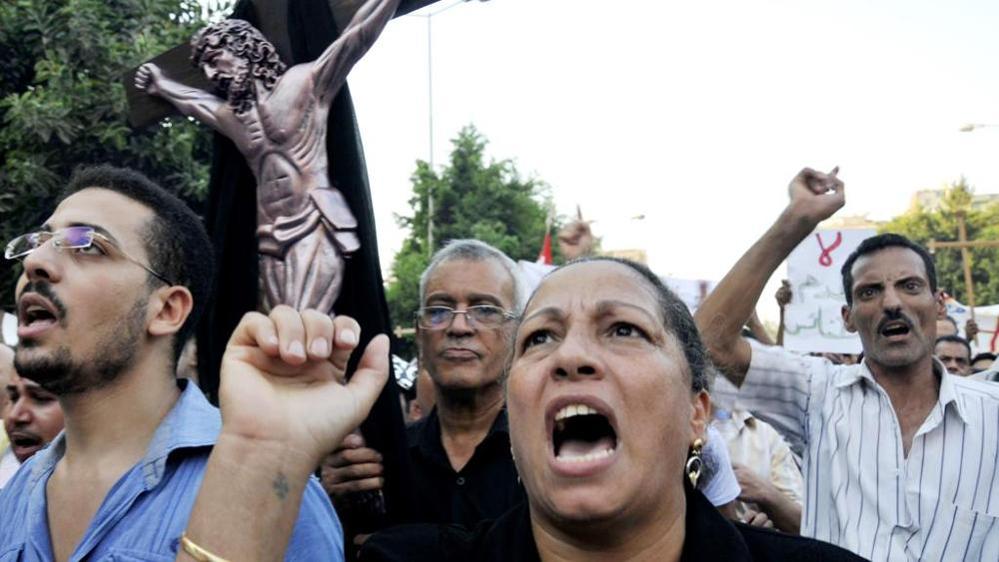Youssef Sidhom – Watani –
Last August the House of Representatives passed the Law for Building and Restoring Churches. The law regulates, as its name suggests, the process of licensing the building of new churches and restoring and fortifying already existing ones. Articles (8), (9) and (10) of the law tackle the legalisation of the status of non-licensed churches that existed at the time the law was passed, as well as the buildings attached or affiliated to these churches; such buildings may be annexes to churches, retreat homes, community centres, or such services as clinics, pre-school nurseries, or homes for the aged. The three articles are as important as the ones concerned with building new churches and restoring existing ones. They come to rectify errors of bitter eras during which obtaining licence to build a church was an oppressive, arduous process that in no way secured the required licence. The situation led to cases where churches or buildings affiliated to them were built without licence. Despite their unofficial status, worship and religious rites took place in these churches, and local authorities were fully aware of that, to the point of assigning official security guards for them. During various religious occasions, State officials would visit these unlicensed churches to extend good wishes to the congregation. Some of these churches even figured on official maps. Yet they were all illegally constructed buildings; officially, they were unlicensed. Then came the Law for Building and Restoring Churches last August with promise to correct the legal status of these churches.
The law, however, did not automatically bestow legitimacy on unlicensed churches or the buildings affiliated to them. Its articles only depicted the procedure to be followed in order for these buildings to gain legal status. It shouldered the Cabinet with the responsibility of issuing a set of directives to resolve the predicament of these churches. I already wrote that the real test for the Law for Building and Restoring Churches is its on-the-ground application, whether the new law would ease the building and restoration of churches as was intended, or would further complicate the process.
Therefore I believe that we should remain alert to all decisions and directives issued for the implementation of the new law.
On 26 January 2017, the Prime Minister issued a decision to regulate the procedures of resolving the predicament of unlicensed churches and their affiliated buildings that existed when the Law for Building and Restoring Churches was issued.
It is thus important that all concerned with legalising the status of these buildings should speed up the process of preparing the necessary papers and submitting them to the committee concerned with the legalisation process. The PM’s decision sets the date 28 September 2017 as the deadline for accepting the required papers, starting from 27 January 2017.
I will here shed light on the most important points of the PM’s decision:
- The committee mentioned in Article (8) of the Law for Building and Restoring Churches shall be formed. It shall be chaired by the Prime Minister, and will include as members the Ministers of Defence and Military Production, Housing, Utilities and Urban Development, Local Development, Legal Affairs and the House of Representatives, Justice, and Antiquities; as well as representatives of the General Intelligence, the Administrative Supervisory Authority, the Interior Ministry’s Homeland Security Department, and the sect in question. The committee may seek the assistance of experts; but they shall not have the right to vote on the committee’s decisions.
- The committee shall study the applications submitted to it, and will verify that they answer to the following conditions:
The application shall be submitted by the legal representative of the relevant religious sect; the building requiring the licence would have existed at the time the Law for Building and Restoring Churches came into force; the building is structurally sound as per a report by a consultant construction engineer certified by the Engineers’ Syndicate; the building conforms with the recognised building standards; the building abides by the rules and regulations required by the defence, State possessions, urban communities, antiquities and architectural heritage.
- The committee shall convene at least once a month. Its deliberations are confidential, and it passes its resolutions through a majority ballot. The committee’s chair and rapporteur sign the minutes and resolutions of the meetings. The committee submits a monthly report to the Cabinet in order for it to take the necessary measures regarding approved legalisation or to resolve any conflict in this regard.
I would like to remind that this editorial is intended to alert all those concerned with licensing unlicensed churches. I repeat that the Law for Building Churches and the PM’s decision regarding unlicensed churches are both under test, and will be assessed in terms of the ease or complication they generate in their on-the-ground application.
I would also like to point out that the structural and technical conditions required are understandable and imperative. However the inclusion of representatives of sovereign authorities, State ministries, general intelligence, supervisory and security authorities as members in a committee chaired by none other than the Prime Minister begs answers to inevitable questions. Why the need for such high-ranking political representation? Unlicensed churches are mostly very modest buildings built by people who felt compelled to bypass the law since the law turned its back on them. What need then for all this?
_____________________
http://en.wataninet.com/opinion/editorial/on-unlicensed-churches-to-whom-it-may-concern/18780/
Photo: Coptic Church amidst attacks and fears of returning to the past – La Stampa






